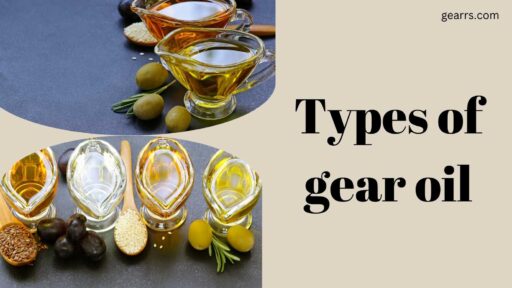Explore our premium gear oil for brush hogs to ensure optimal performance and longevity. Find the perfect lubricant for your equipment today!
A properly maintained brush hog can be an unsung hero of the farm or field – relentlessly hacking through thick vegetation to keep land in check. But what many farmers may not know is that one of the most crucial elements, if not overlooked, on their trusty brush hogs is the gear oil that keeps its mechanical heart pumping. This guide will cover everything about gear oil, from its importance and explanation to how-to ensure your brush-hog (and farming operation) keeps running smoothly.
What Is Gear Oil?
Gear oil is a lubricant made specifically for use in gearboxes, such as those found in brush hogs. It typically consists of base oils and additives that work together to offer optimum protection against wear, heat and corrosion. Unlike motor oils which primarily serve to reduce friction between moving engine parts; gear oils have more demanding duties.
The Thick And Thin Of It
Just like high-performance engines need specialized oils, so do brush-hog transmissions operate under extreme conditions of their own kind. Gear oils are not only meant to lubricate intricate gears that transmit power from PTO (Power Take-Off) shaft but also dampen as well as cool them so as to prevent any form of rubbing action due to heat produced through friction.
However, all gear oils are not created equal since different classifications ranging from API GL-1 up-to API GL-6 exist in order to match diverse gearbox design and operational needs. These groups play a critical role in determining how much protection an oil can give against wear or extreme pressure while still inhibiting oxidation at suitable viscosity level (resistance of oil flow).
For your average brush cutter EP (Extreme Pressure) rated gear lube will often be recommended because gears get squeezed hard during work process. Synthetic types, though costlier than mineral-based ones, boast wider temperature stability ranges and hence could outperform them under certain conditions, thereby justifying investment.

Credit: www.pexels.com
Correct Lubricant Selection
When it comes to choosing gear oil for your brush hog there is no universal solution. You need to take into account manufacturer’s recommendations, operating environment and maintenance record of the machinery. Does this cutter operate under changing weather patterns or is it situated within one type climate most times? Do you frequently idle between tasks or keep PTO engaged continuously?
It would be best if you refer to the brush cutter’s manual, which will indicate the required viscosity and classification. Some brands may even be specified since they are often developed together with equipment builders so that both can deliver maximum performance.
Viscosity is particularly critical because it governs how easily an oil flows at cold start-up and maintains adequate film strength under elevated temperatures. Too low a viscosity could cause sluggishness during winter while excessive thinning out due heat generated by heavy load on gearbox
To be successful in changing the gear oil of your bush hog is a relatively simple but important task. A fresh batch of oil provides not only new lubrication, but also new life for your machine which can save you from many expensive problems later on.
Here’s a step-by-step guide to changing the gear oil in your brush hog
Step 1: Preparation
Safety First: Ensure that the brush hog and its surroundings are clean so that no debris contaminates the oil.
Equipment Check: Collect what tools are needed – usually a wrench, socket set, oil pan, and rags – along with the right replacement gear oil as specified in the manual.
Step 2: Drain The Old Oil
- With the brush hog on level ground, remove either the fill plug or dipstick to allow air in as you drain out the old lubricant.
- Locate and remove the drain plug, allowing old lube to flow into an oil pan; be careful because it might still be hot from running recently.
- When all liquid has dripped out completely, reattach or reinstall (if necessary) the drain plug, making sure it seals tight against leaks.
Step 3: Refill With Fresh Oil
Refilling gearbox with new gear oils is done via two steps. Start by filling up manufacturer’s recommended amount using a funnel into closest (lowest) hole first once full move up until correct fill level line is reached at higher spot based on viscosity ratings intended for various temperature ranges under which equipment operates; This prevents overfilling especially when working with machines like these that operate in different environments where temperatures fluctuate drastically throughout year.
Last Step: Double-Check And Clean Up
- Replace whatever was removed such as fill plug or dipstick then tighten securely afterwards so nothing will leak out again during next use cycle;
- Wipe off any spilled or splattered fluids from surfaces around bush cutter to keep them looking neat;
- Properly dispose used gear oils by taking them either back where they came from or dropping off at specific recycling centre designed for this purpose.
- Depending on how often it is used and where changing of gear oil should be done regularly so as to make the brush hog work better and last longer.
The Danger Of Delaying
Skipping regular maintenance can result in problems like gear pitting, chattering noises, or even full blown gearbox failure which may be expensive to fix if not replace. This will not only stop you from working but could also lead to costly repairs and replacement parts.
Some common preventable issues include
Rust And Corrosion
When water mixes with oil or other acidic substances and comes into contact with metal surfaces such as gears and bearings, this leads to corrosion, which eats them away. Consistent application of fresh lubricants helps remove these harmful elements while keeping all parts well protected against future damages caused by the rusting process.
Degradation of Oil
With time, every lubricant loses its effectiveness through breaking down, thereby reducing the ability to flow smoothly over surfaces where it’s needed most. Regular replacements therefore ensure that there is always enough quantity available so that friction between different moving components can be minimized resulting into heightened efficiency during operation.
Gear Teeth Wearing Out
In the absence of a good cushioning effect provided by proper amounts of greasing materials, teeth are likely to get worn down quickly, leading to poor performance followed by increased breakdowns requiring major fixes or complete substitutions involving whole units with new ones, which cost much money besides being time-consuming undertaking.
Success Stories With Well-Lubricated Transmission Systems
Farmer Bailey attributes the improved performance of his brush hog to a change in specialty gear oil. The farm is now more productive than ever, with less noise from the gears and a sense of increased efficiency.
The Reliability Asserters
Landscaper Lee remembers when just a shift in gear oil viscosity made his brush hog go through tough terrains like a hot knife through butter. This resulted in significantly higher reliability rates and, consequently, customer satisfaction.
The Cost-Efficiency Crusaders
Agricultural Owner Owen tells how sticking strictly to changing gear oil helped him escape having to repair an expensive machine. The right type of gear oil performed its duty well enough for what supposed to take a fortune rebuilding a gearbox turned out as nothing.
Frequently Asked Questions (FAQs)
What kind of gear oil should I use for my brush hog?
Always consult your brush hog’s manual for the recommended type and viscosity of gear oil needed, as different models may require different types. The manual may also suggest using certain brands because they have partnered with some manufacturers and are gaining preference over others.
How often should I change the Gear Oil For Brush Hog?
Depending on usage frequency together with operating conditions, among other factors, you can decide how frequently you would like to change your machine’s gearbox lubricant, but generally, it is advisable to do so at least once per annum or after 100 hours have elapsed since the last time this task was carried out; nevertheless refer back again into a booklet for specific instructions issued by producer.
Can I mix different brands of gear oil?
Although it is not recommended to mix oils where different additives might react adversely against each other if these are the same viscosities meeting exact specifications, then temporarily combining diverse makes could be applied instead; however, best practice demands that one brand and type should always be used consistently throughout all applications whenever practicable so as not compromise performance levels achieved thereby ensuring maximum benefits derived therefrom are realized within a shortest possible period of time.
Why should I change gear oil even if my brush hog is not used frequently?
Inactivity does not mean inaction as far as lubricants go; thus, gearbox lubricants may deteriorate over time, especially when exposed to external elements such as moisture; therefore, failure to replace them regularly can lead to corrosion, which eventually results in wear; hence regular replacement safeguards against this risk while still preserving other necessary properties required by proper functioning of these systems under normal working conditions without any noticeable deterioration thereof.
What are signs that indicate the need for replacing gear oil?
Gear noise emanating from the box becoming significantly louder than before, difficulty shifting gears during cold temperatures due to sluggish operation, and appearance characterized by milky coloration, thereby pointing out the presence of water within, among others, serve clear indications that immediate action must be taken prescribed corrective measures being undertaken sooner rather later could save both money time.
Can I change the gear oil myself?
Certainly yes, changing gearbox fluid ranks among common DIY activities performed by the majority of owners using basic tools recommended following the step guide outlined here alongside ensuring environmentally friendly disposal methods are adhered to whenever dealing with waste products like used oils, among others.
Conclusion of Gear Oil For Brush Hog
To sum up, many people may look at Gear Oil For Brush Hog maintenance as a small part of overall agricultural operations but it is indeed one critical area which should never be underestimated nor taken for granted either. Regular inspections, right selection together timely replacement can greatly enhance performance levels achieved thereby extending useful life span associated with brush hogs.
Closing up the gearbox of our conversation, be reminded that gear oil is not only the unsung hero of the brush hog but also works hard each day against the elements and land. Making sure to always take care of it will ensure that this machine can cut through the densest vegetative margins, leaving your properties thriving and your operations flourishing.
To learn more about taking care of farm equipment, feel free to consult industry professionals, fellow farmers, or reputable manufacturers of gear oils. They will help you come up with a schedule for maintaining gear oil that can compensate for unique application peculiarities thereby opening up new levels of performance from your favorite brush cutter.
Never forget that like any other system with moving parts, keeping a brush hog well-lubricated involves providing it with fresh supplies this essential fluid which acts as its lifeblood. Once you do this, expect bountiful harvests from untilled soils; hence, do not wait but prioritize Looking after Gear Oil For Brush Hog if smooth operation is what you desire most when using these machines. Have fun mowing!






